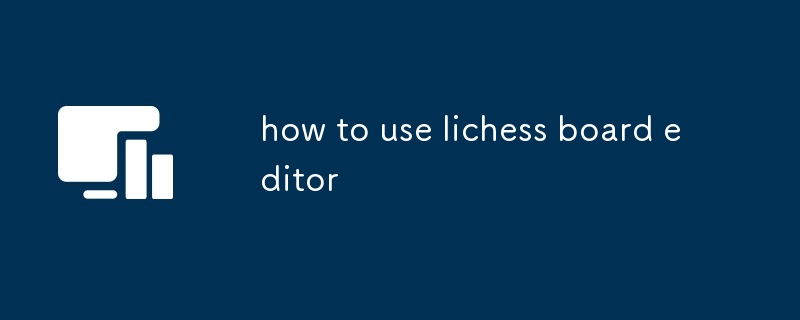This article provides users with a comprehensive guide on utilizing the features and functionalities of the Lichess board editor. It covers the process of setting up custom chess positions, visualizing complex chess scenarios, and facilitating collab

How can I set up a custom chess position on Lichess?
To set up a custom chess position on Lichess, follow these steps:
- Open the Lichess board editor at https://lichess.org/editor.
- Click the "Fen" tab.
- Enter the Forsyth-Edwards Notation (FEN) for your custom position in the text field.
- Click the "Start" button to load the position on the board.
What is the best way to visualize complex chess scenarios using the Lichess board editor?
The Lichess board editor provides several tools to help you visualize complex chess scenarios:
-
Engine Analysis: Use the engine analysis feature to get AI-generated recommendations on the best moves for both sides.
-
Annotations: Add annotations to the board to highlight key squares, moves, or ideas.
-
Themes: Select from a variety of themes to change the appearance of the board and pieces.
-
Board Perspective: Switch between White's and Black's perspective to better understand each side's position.
How can I collaborate with others on building and analyzing chess positions in real-time using the Lichess board editor?
The Lichess board editor allows real-time collaboration on chess positions. To collaborate with others:
- Create a new analysis board by clicking the "New Analysis" button.
- Share the link to the analysis board with your collaborators.
- Collaborators can join the analysis session and view, move, and annotate the pieces on the board.
- Communicate with your collaborators using the chat feature integrated into the analysis board.
The above is the detailed content of how to use lichess board editor. For more information, please follow other related articles on the PHP Chinese website!






